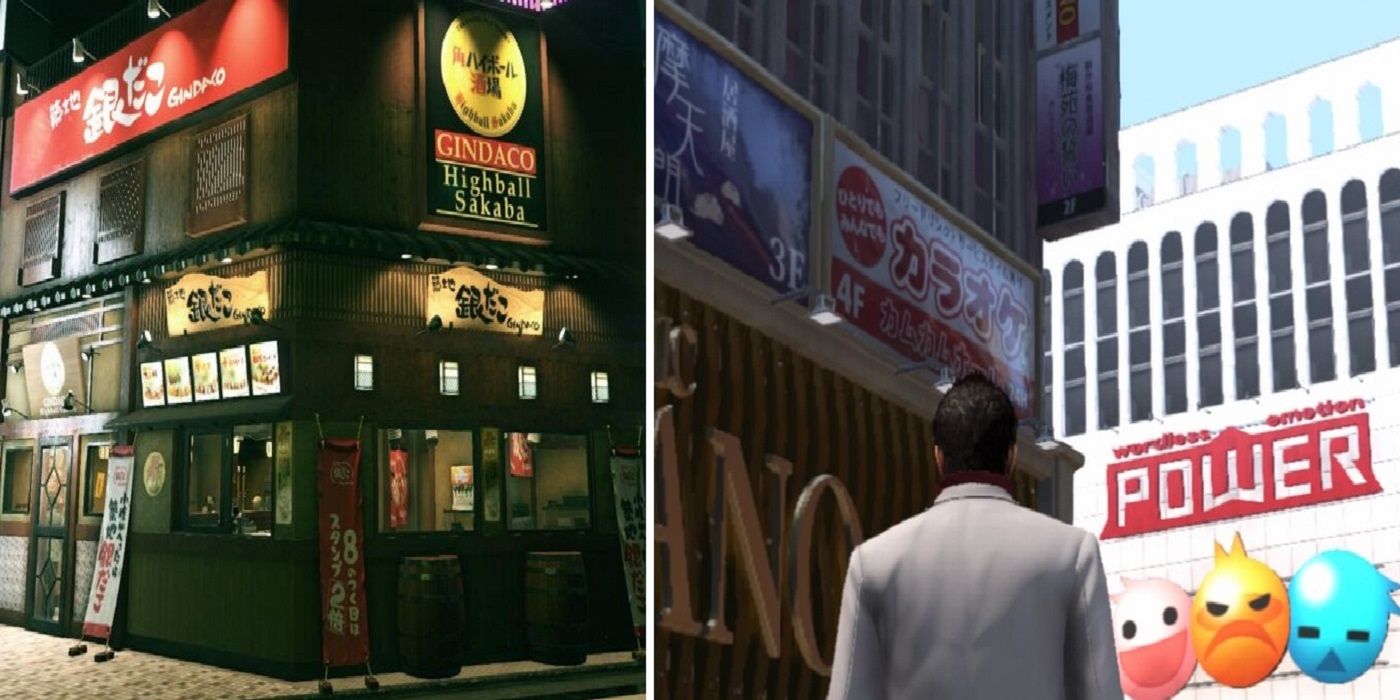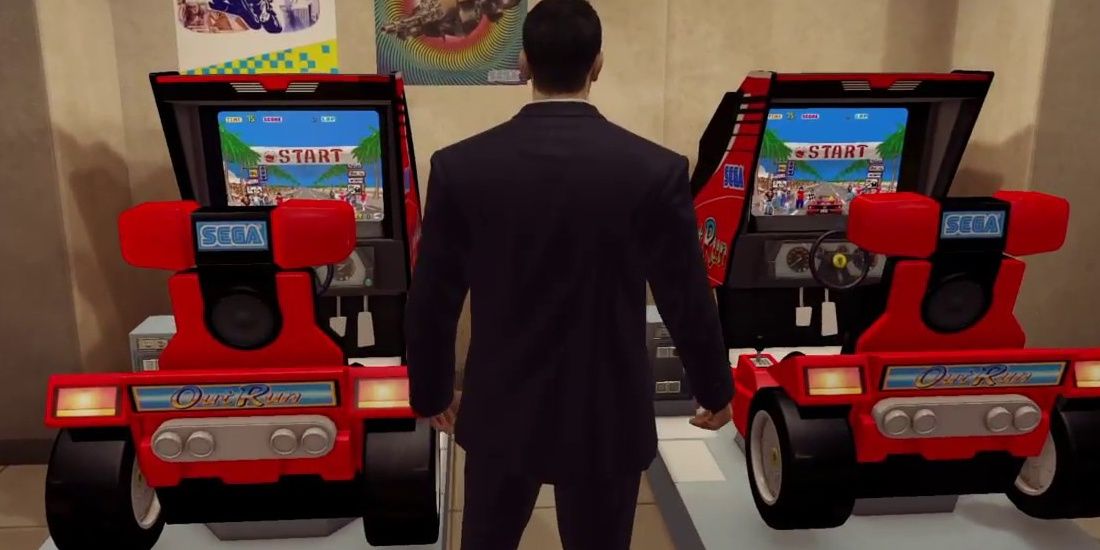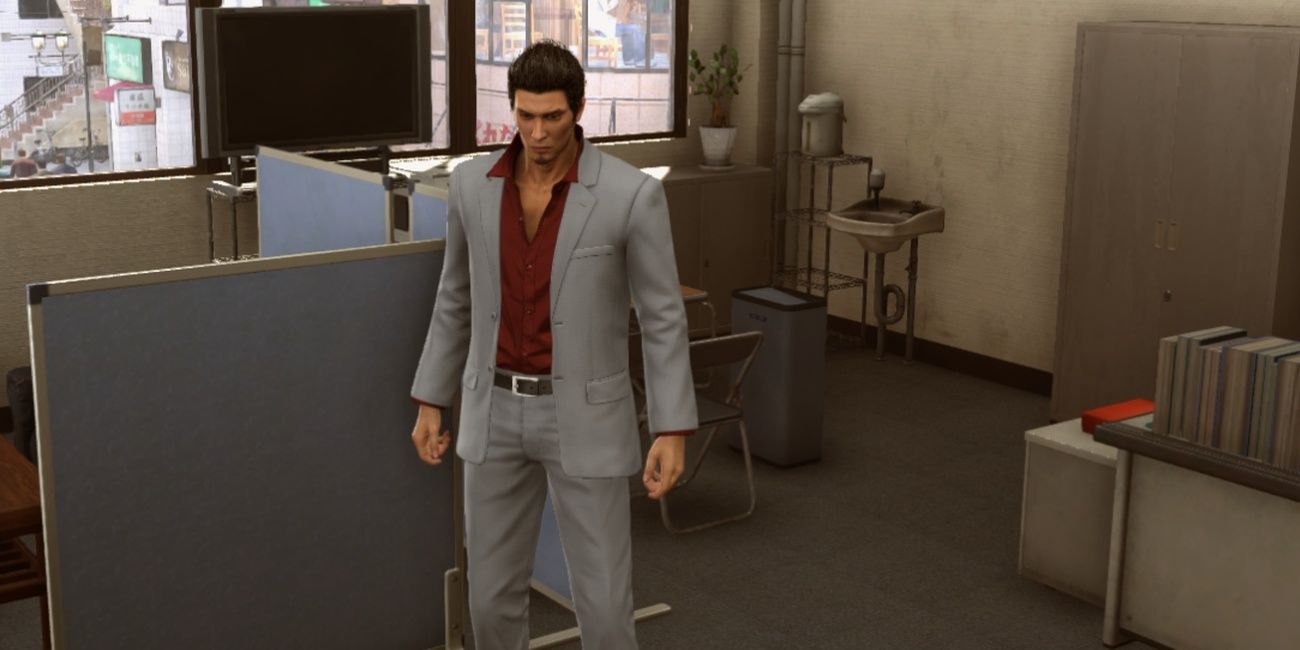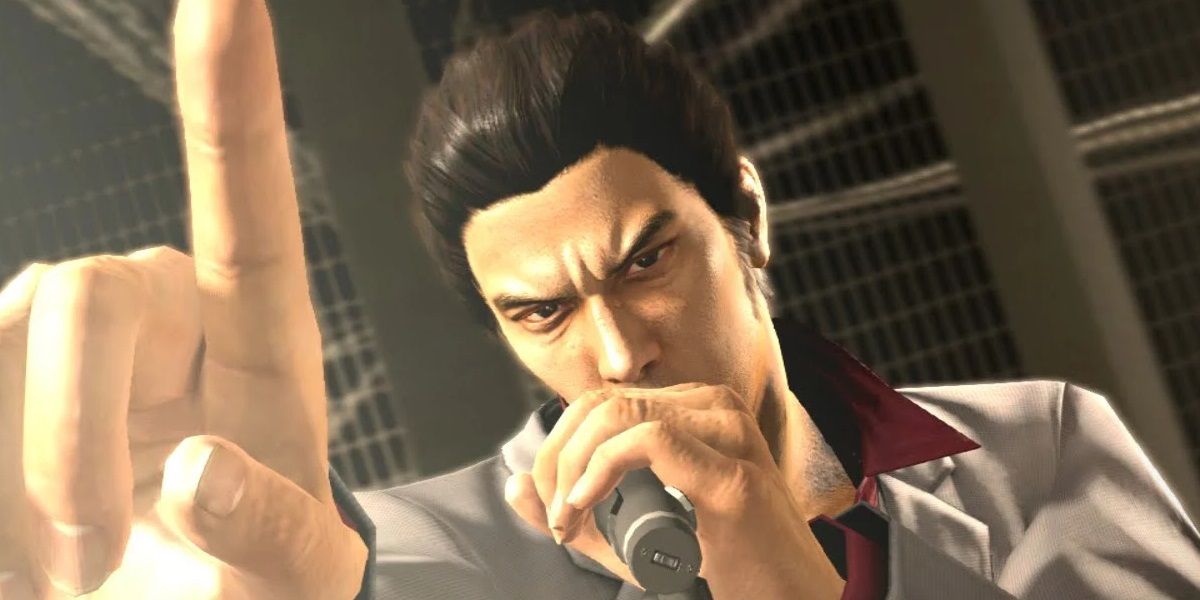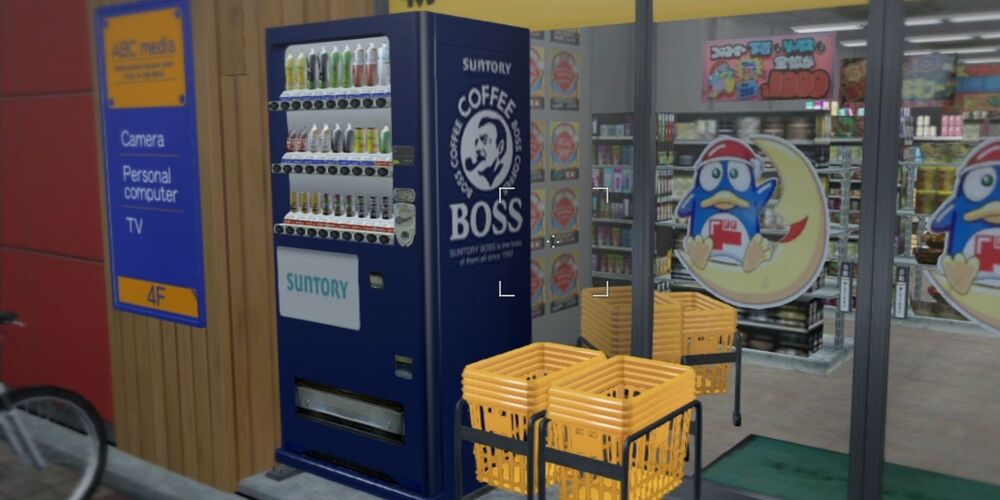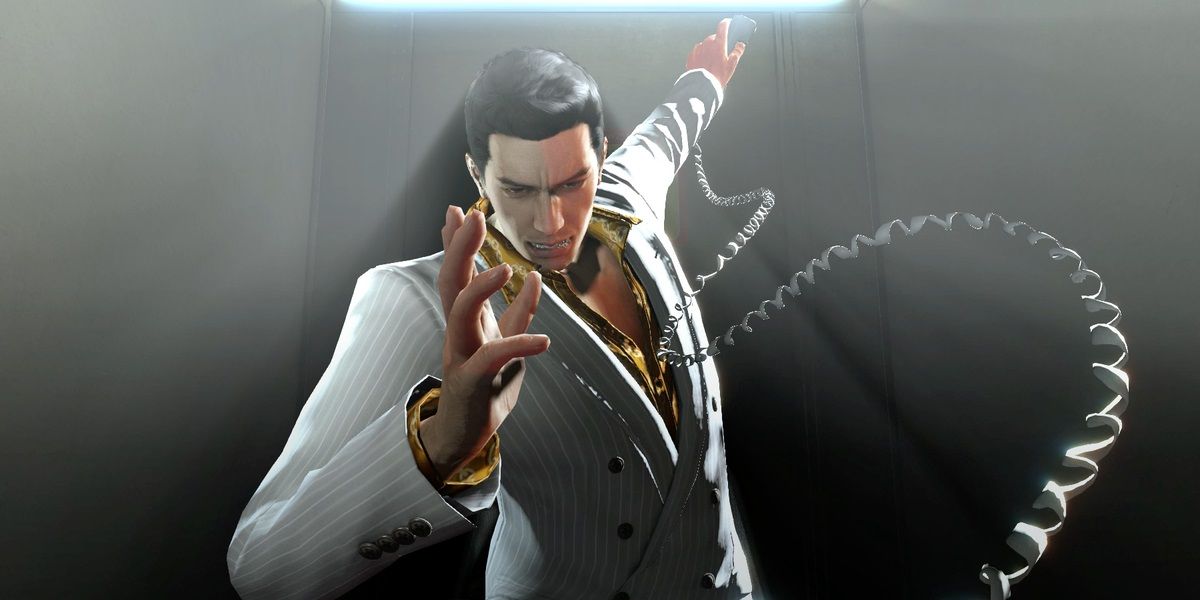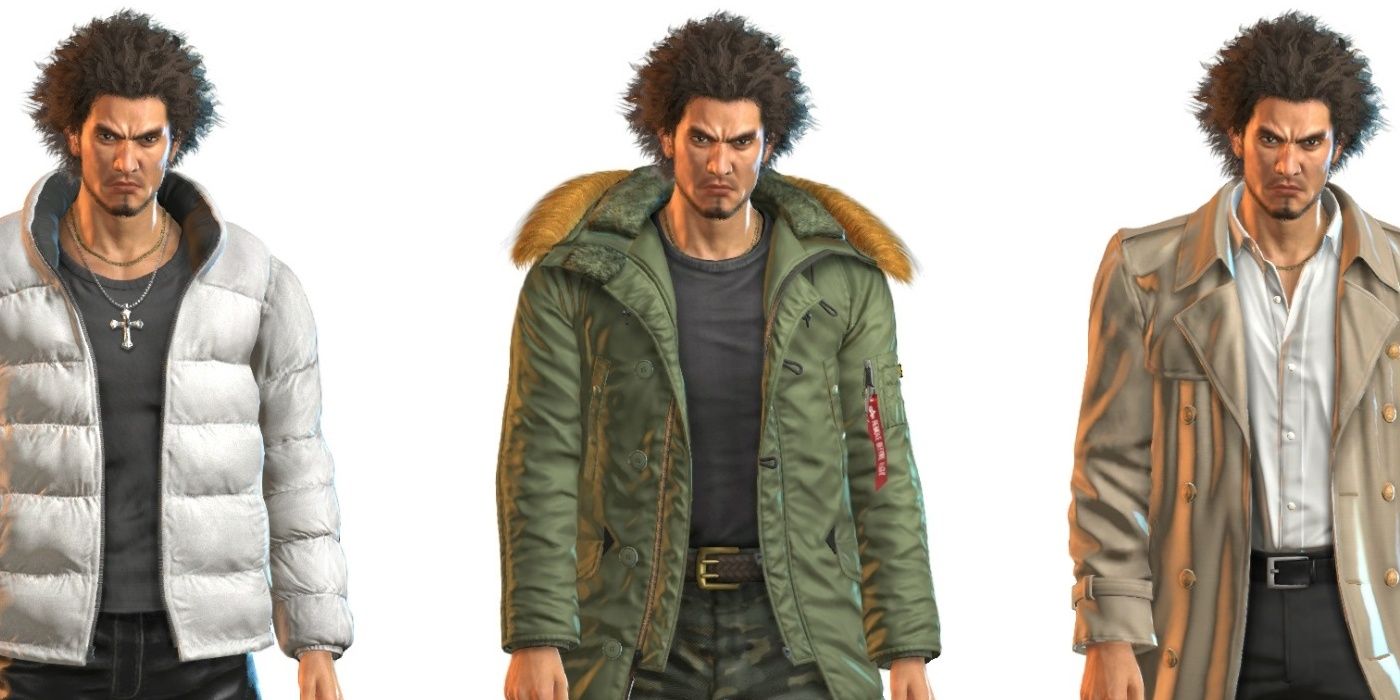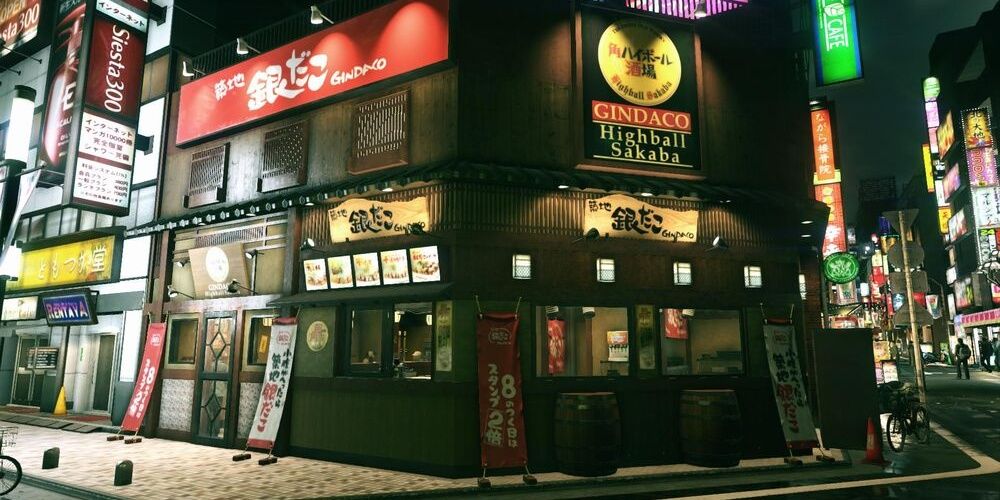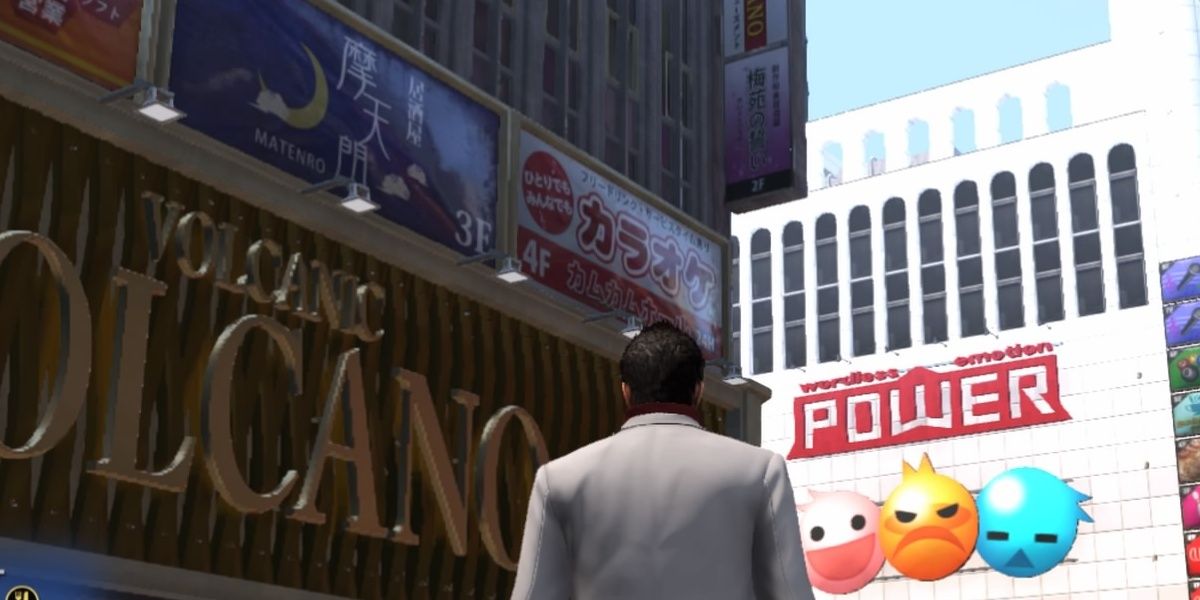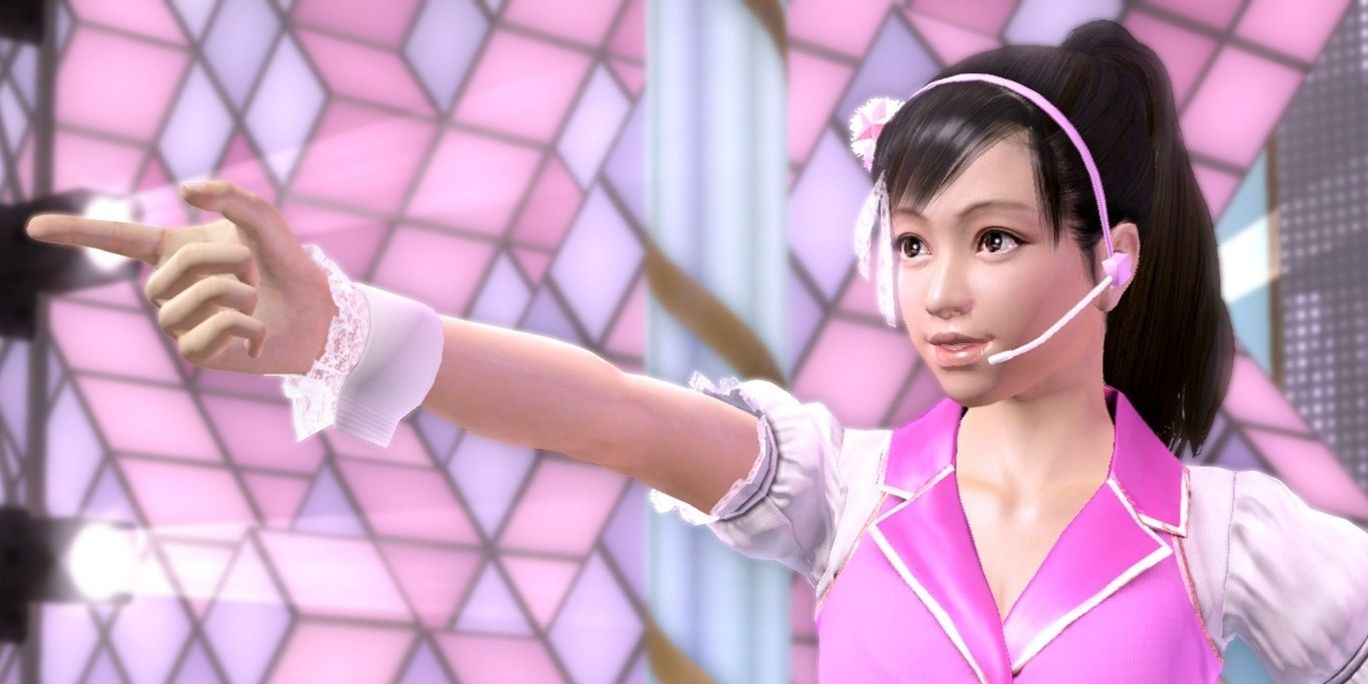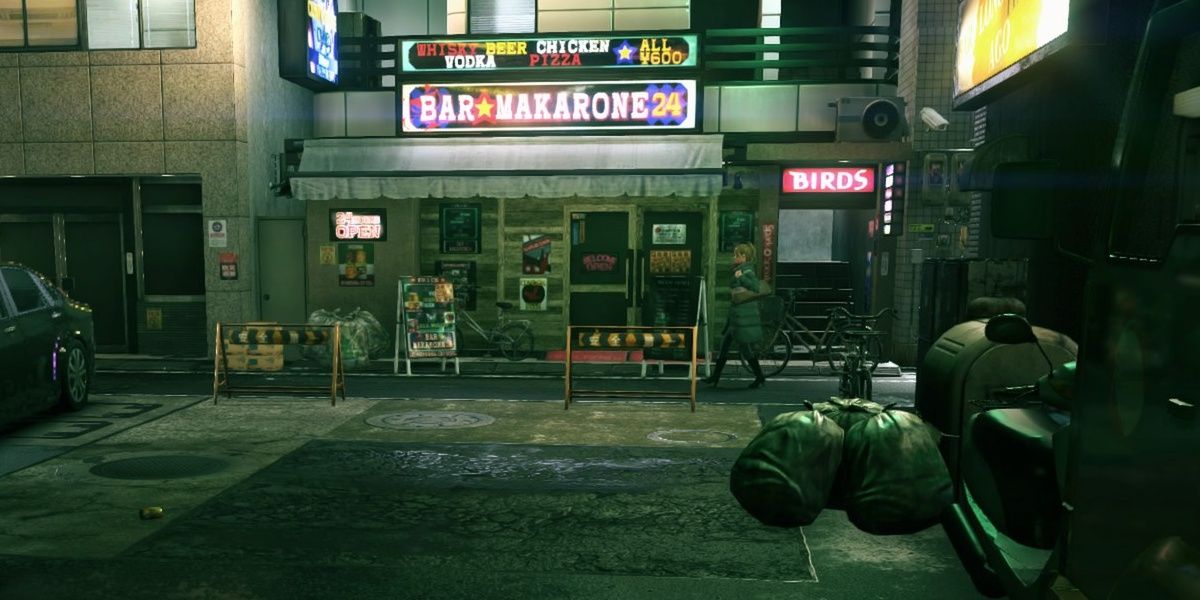With each successive game in the Yakuza franchise, more characters and plot developments build upon the web of stories that make up protagonist Kiryu Kazama's life. Friends become enemies, enemies become allies, powers shift from clan to clan, and everything is changing in the world.
Even the city of Kamurocho, in which the majority of the game takes place, changes with the turn of events and the passage of time. Some of its changes have been major, such as the building of the Kamurocho Hills business complex, while others are more easily noticed by long-time fans of this beloved franchise.
10 Arcade Games
One of the highlights of the Yakuza franchise is its use of arcade games throughout its signature SEGA locations. Since every game takes place in a different year, the developers take note of the games that would be popular during that time and incorporate them into Kamurocho's arcades.
Yakuza 0 boasted classics like Space Harrier and Out Run from the 1980s, while Yakuza Kiwami 2 had Virtua Fighter 2 and Virtual On: Cyber Troopers to represent the 90s and early 00s. Later entries in the franchise started including both classic and modern games, with Yakuza: Like A Dragon including everything from Fantasy Zone from 1986 to Virtua Fighter 5: Final Showdown from 2010.
9 Entering Buildings
With the development of the Dragon Engine for Yakuza 6: The Song of Life, the Yakuza team was able to include the ability for protagonists to enter buildings. While not a chronological change, this inclusion extended to Yakuza Kiwami 2 as well, as the remake was made using the same engine.
While it changed the Yakuza franchise’s gameplay in many ways, the ability for Kiryu and Ichiban to walk through hallways, up stairwells and ladders, and enter into smaller nooks and offices added a sense of place and realism. This was something previously missing in Kamurocho.
8 Music
One of the fan-favorite minigames of Yakuza is the rhythm-matching karaoke. Belting out songs in intimate venues has been a popular pastime both in real-world Japan and Kamurocho, and every game has had a different selection of songs to choose from.
From the rock ballad "Judgement -Shinpan-" in Yakuza 0 to the funky dance beat of "Saturday Night Lover" in Yakuza 3, there have always been a variety of songs available to enjoy with party members. Fan favorite "Bakamitai" makes another appearance in the latest entry of the franchise.
7 Product Placement
The Yakuza franchise has often been lauded for the realism of Kamurocho. To make the players feel like they are walking through the city streets of its real-life counterpart, the development team has worked with real companies to include their brands in the games.
Various foods and drinks can be found in restaurants and vending machines, including Boss Coffee, Suntory liquor, and Acecook instant noodles (the latter got its own minigame in Yakuza 3). In Yakuza 5, the iconic Vocaloid Hatsune Miku even appears throughout the game and is offered as a DLC costume for Haruka Sawamura.
6 Technological Advancements
With a franchise that spans 30 years in-game, following Kiryu Kazama and now Ichiban Kasuga, the Yakuza series has seen quite the progression of technology. From pagers to smartphones, there has always been a way for characters to connect to the protagonist while on the go, but Kamurocho has seen the changes, too.
In the (chronologically) earlier games, payphones and phone booths were strewn about the city streets, whereas in Yakuza: Like a Dragon they are few and far between. This advancement can also be seen in the ways that cars have changed over the years: from boxier, more angular cars in Yakuza 0 to the sleeker and more stylish sedans in Yakuza 6.
5 Fashion
It would be hard to gauge a difference in fashion between certain games in the Yakuza series. However, when looking at the franchise from its chronological beginnings (Yakuza 0) to Yakuza: Like a Dragon, there are some obvious differences.
The people of Kamurocho are still enjoying a fun-filled city of casinos, bars, and arcades, so it makes sense for them to still be dressed up each night for a fun time (Insert Coin have created some equally stylish real-word jackets inspired by the franchise). however, the way they dress has changed. The garish lime green polka-dotted suits and large shoulder pads of the 1980s have been replaced with more sleek attire of slacks, tailored suits, and regular-sized collars. Another sign of the times that may not be very prominent if fans don't stop and look.
4 Venues And Storefronts
Kamurocho is a living city which changes every year. There’s a lot of competition to keep a business running, after all, when you’re trying to open yet another bar or pachinko parlor (though pachinko machines were recently removed from the PC editions of Yakuza 4 and 5). As such, it's a sad inevitability that the smaller stores may come and go with each Yakuza entry.
While Kiryu and Ichiban may not be able to walk into every store, smaller businesses make up a lot of the variety and texture of the city. The subtle change of colors, sounds, and venue names demonstrates the passing of time throughout Kamurocho. The city is consistent in its inconsistency.
3 Advertisements
In Yakuza 0, all the signs and advertisements throughout the city were static images. The lights and neon flashed and moved to catch the eye, but the billboards and posters never changed.
As the series progressed, though, the advent of digital marketplaces and billboards brought new life to the city and more ads could be seen in the same locales. In the later entries, signs often change, swapping between advertisements for drinks to QR codes that could scanned and everything in between.
2 The Music Scenes
Kamurocho is a city of fun, and sometimes its residents want to let loose and enjoy themselves. This has led to multiple substories throughout the Yakuza franchise that have dealt with the music scenes throughout the city. The musical tastes of Kamurocho residents have changed to reflect the times and interests of real-world Japan.
The prevalence of music culture in the Yakuza games (their excellent soundtracks are now streaming on Spotify) has also played major roles in character development. Haruka Sawamura learns to be a pop idol in Yakuza 5, for instance, and a recurring side character of once-famed pop star Il Yu-Jin appears throughout the series (resulting in an ally that can be summoned in Yakuza: Like a Dragon).
1 A 'Cleaner' Image
The bustling city of Kamurocho has two pressing issues: garbage and the homeless population. The Yakuza series has often used the homeless population of its cities in various roles, ranging from allies in Yakuza: Like a Dragon to secret underground black market operators in Yakuza 0 and Kiwami.
As the series progresses, the homeless encampment in the northeast park of Kamurocho is paved over to build the Kamurocho Hills business complex. As a result, the homeless population dwindles. The trash bags and litter on the streets throughout the city also slowly fade away as the series progresses. These people aren't gone, and the player still interacts with them, but a veneer of affluence has spread across Kamurocho that fails to conceal the pain it has caused to its most vulnerable.

